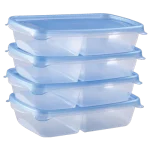“P.P” generally refers to propylene, which is a thermoplastic polymer.(1 Feb, 2024)
Polypropylene grades vary based on their molecular structure,
processing method, and intended ap-plications.
Here are some common propylene grades and their applications:
Homopolymer (H):
Introduction:
Homopolymers are commonly employed as base materials in the injection molding process across various industries.
This article explores the optimization of homopolymer usage in different injection molding processes,
including packaging, automotive components, and consumer goods.
Main Sections:
1. Homopolymer Characteristics:
– Examination of the chemical and physical properties that make homopolymers a suitable choice for the injection molding process.
2. Ap-plications of Homopolymer in Different Industries:
– A review of the extensive ap-plications of homopolymers in packaging, the production of automotive parts, and consumer goods.
3. Optimizing the Injection Molding Process:
– Solutions and techniques for optimizing the injection molding process using homopolymers.
4. Advantages and Challenges:
– Evaluation of the advantages and challenges of using homopolymers in injection molding processes.
5. Conclusion and Recommendations:-
A summary of the obtained results and recommendations for enhancing the use of homopolymers in injection molding processes.
Ap-plication:
Used in various injection molding ap-plications,
such as packaging, automotive components, and consumer goods.

Random Copolymer (R.C.P):
Introduction:
Random Copolymers (R.C.P) have gained prominence for their ability to provide improved clarity and impact resistance in various applications.
This article delves into the versatile uses of Random Copolymers, particularly in packaging, housewares, and medical applications.
Main Sections:
1. Random Copolymer Characteristics:
– Exploring the distinctive features of Random Copolymers that contribute to enhanced clarity and impact resistance.
2. Ap-plications in Packaging:
– Analyzing how Random Copolymers are effectively utilized in the packaging industry to improve product visibility and durability.
3. Housewares Applications:
– Examining the role of Random Copolymers in enhancing the quality and durability of houseware products.
4. Medical Applications:
– Investigating the specific advantages and ap-plications of Random Copolymers in the medical field, where clarity and impact resistance are crucial.
5. Comparative Benefits and Limitations:
– Providing a comparison of the benefits and potential limitations of using Random Copolymers in different ap-plications.
6. Future Trends and Innovations:
– Discussing potential advancements and innovations in the use of Random Copolymers, with a focus on evolving applications.
7. Conclusion:
– Summarizing the key points and emphasizing the significance of Random Copolymers in achieving improved clarity and impact resistance.
Ap-plication:
Offers improved clarity and impact resistance,
making it suitable for packaging, housewares, and medical applications.
Block Copolymer (B.C.P):
Introduction:
Block Copolymers (B.C.P) have earned recognition for their exceptional toughness and impact resistance,
making them a preferred choice in various applications. This article explores the versatile uses of Block Copolymers,
focusing on their applications in automotive parts, industrial containers, and appliances.
Main Sections:
1. Block Copolymer Attributes:
– Investigating the specific attributes of Block Copolymers that contribute to their toughness and impact resistance.
2. Automotive Ap-plications:
– Examining how Block Copolymers play a crucial role in enhancing the durability and impact resistance of automotive components.
3. Industrial Containers:
– Analyzing the applications of Block Copolymers in the manufacturing of industrial containers, emphasizing their resilience in demanding industrial settings.
4. Ap-pliance Products:
– Exploring the usage of Block Copolymers in appliances, highlighting their contribution to the toughness and longevity of household products.
5. Comparative Strengths and Limitations:
– Providing a comparative analysis of the strengths and potential limitations of using Block Copolymers in different applications.
6. Innovations and Future Prospects:
– Discussing potential innovations and future trends in utilizing Block Copolymers, especially in emerging applications.
7. Conclusion:
– Summarizing the key findings and underlining the significance of Block Copolymers in delivering toughness and impact resistance.
Ap-plication:
Known for its toughness and impact resistance,
it is often used in products like automotive parts, industrial containers, and appliances.
High-Melt Strength(HMS):
Ap-plication: Ideal for extrusion applications like foam sheet production,
where enhanced melt strength is beneficial.
Impact Copolymer (I.C.P):
Ap-plication: Combines high impact strength with good stiffness,
making it suitable for applications like packaging, containers, and durable goods.
Fibers:
Ap-plication: propylene can be processed into fibers for use in textiles,
ropes, and geotextiles due to its high tensile strength.
In summary, the specific propylene grade chosen depends on the desired properties for a particular ap-plication,
such as flexibility, transparency, impact resistance, or heat resistance.
The versatility of propylene makes it a popular choice in a wide range of industries.








